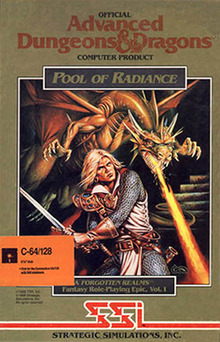It is typically played inside with the members situated around a tabletop. Commonly, one player assumes the job of Dungeon Master (DM) while the others each control a solitary person, addressing a person in an anecdotal setting. When cooperating collectively, the player characters (PCs) are frequently portrayed as a “party” of swashbucklers, with every part regularly having their own space of forte which adds to the achievement of the entirety.

Over the span of the play, every player coordinates the activities of their person and their connections with different characters in the game. This action is performed through the verbal pantomime of the deva name generator character by the players, while utilizing an assortment of social and other helpful intellectual abilities, like rationale, essential arithmetic, and creative mind. A game frequently proceeds over a progression of gatherings to finish a solitary experience, and more into a progression of related gaming undertakings called a “crusade”.
Game mechanics :
- Prior to the game starts, every player makes their player character and records the subtleties on a person sheet. Initial, a player decides their person’s capacity scores, which comprise of Strength, Constitution, Dexterity, Intelligence, Wisdom, and Charisma.
- Every version of the game has offered contrasting strategies for deciding these scores. The player then, at that point, picks a race (species) like a human or mythical person, a person class (occupation) like warrior or wizard, an arrangement, and different elements to balance the person’s capacities and history, which have changed in nature through varying releases.
- During the game, players depict their PCs’ planned activities, for example, punching a rival or picking a lock and chat with the DM, who then, at that point, portrays the outcome or reaction.
- Unimportant activities, like getting a letter or opening an opened entryway, are generally naturally fruitful. The results of more complicated or hazardous activities are controlled by moving dice.
Adventures and campaigns :
An ordinary Dungeons and Dragons game comprises of an “undertaking”, which is generally identical to a solitary story. The DM can either plan a unique experience or follow one of the numerous pre-made undertakings that have been distributed since the commencement of Dungeons and Dragons. Distributed undertakings normally incorporate a foundation story, representations, guides, and objectives for PCs to accomplish. Some incorporate area depictions and freebies. Albeit a little experience named “Sanctuary of the Frog” was remembered for the Blackmoor rules supplement in 1975, the principal independent D&D module distributed by TSR was 1978’s Steading of the Hill Giant Chief, composed by Gygax.
Miniature figures :
The wargames from which Dungeons and Dragons advanced utilized smaller than normal figures to address warriors. D&D at first proceeded with the utilization of miniatures in a manner like its immediate antecedents. The first D&D set of 1974 required the utilization of the Chainmail miniatures game for battle goals. By the distribution of the 1977 game releases, the battle was for the most part settled verbally. Hence miniatures were presently not needed for interactivity, albeit a few players kept on utilizing them as a visual reference.
During the 1970s, various organizations started to sell smaller than expected figures explicitly for Dungeons and Dragons and comparative games. Authorized smaller than expected makers who delivered official figures incorporate Grenadier Miniatures (1980–1983), Citadel Miniatures (1984–1986), Ral Partha, and TSR itself. The vast majority of these miniatures utilized the 25 mm scale.




